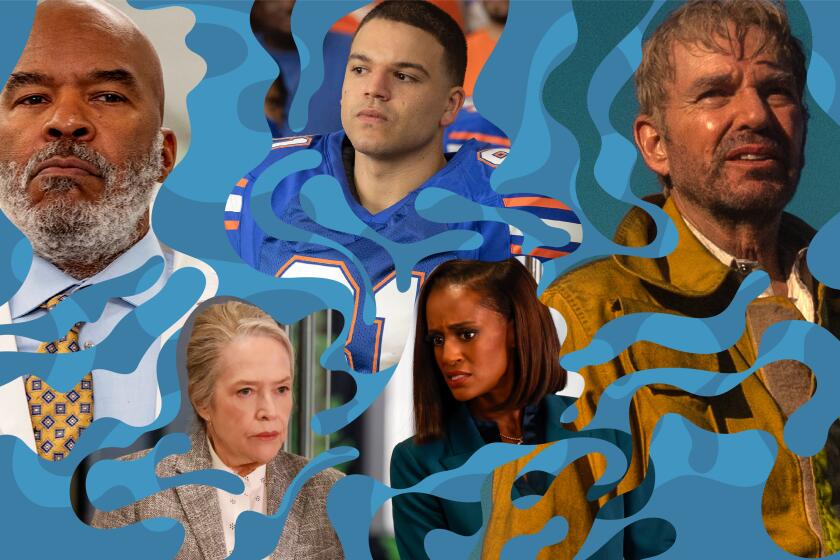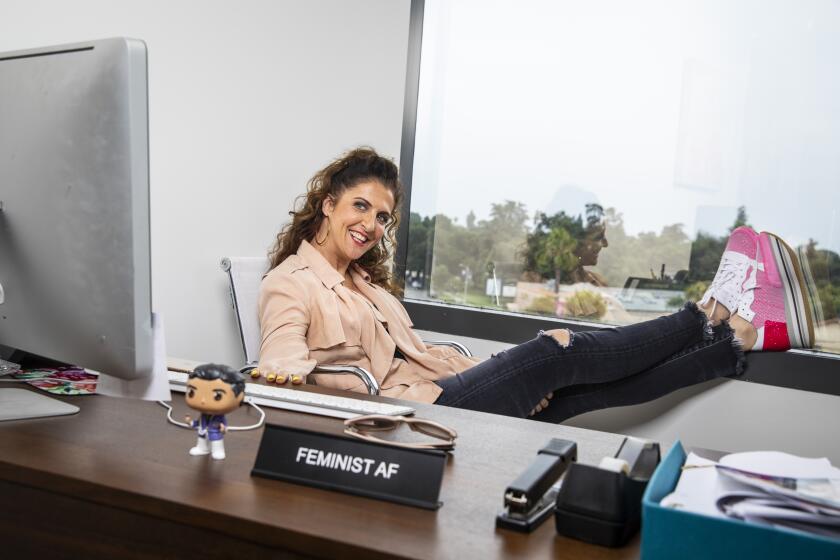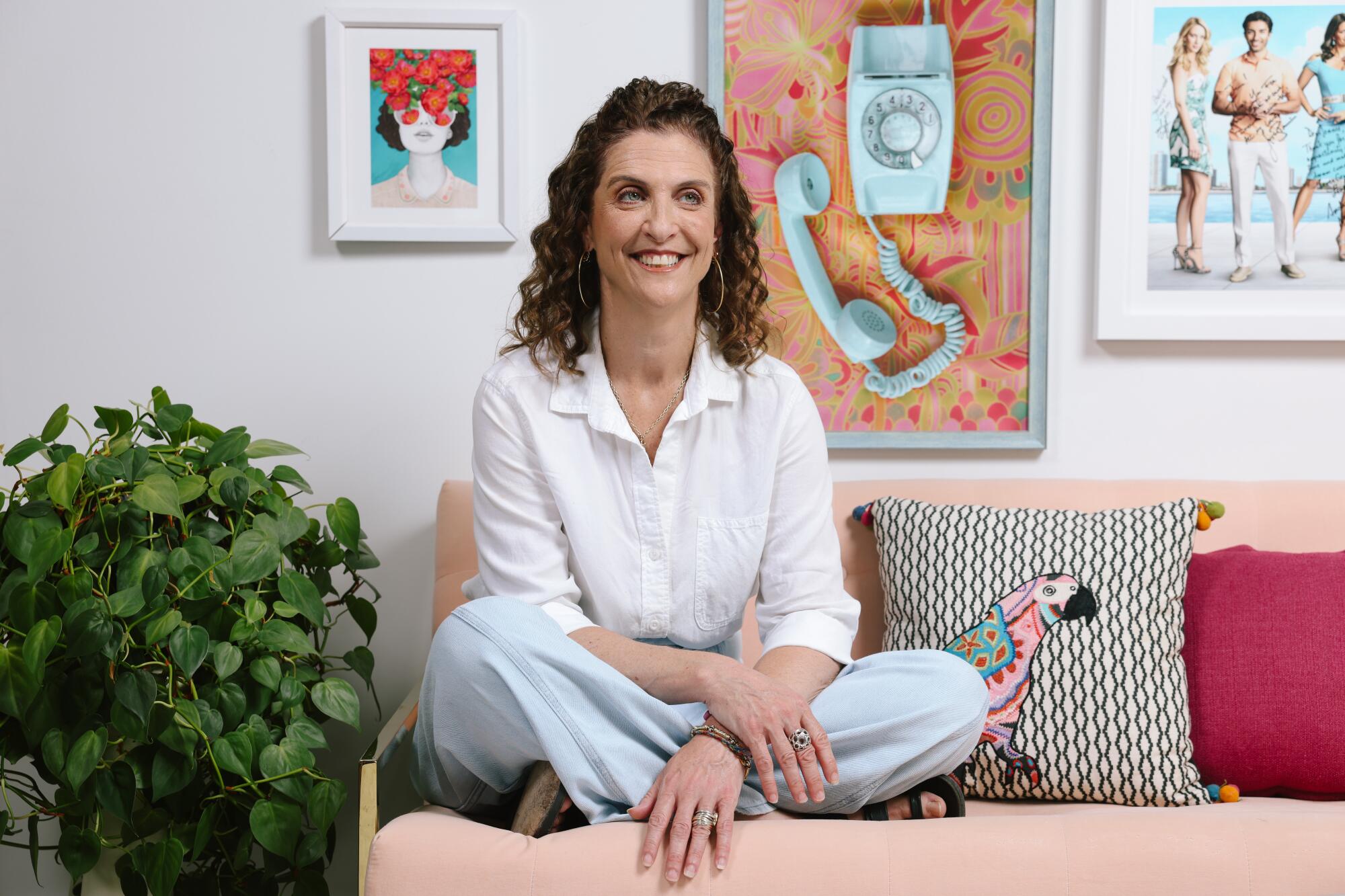
- Share via
When most people think of “Matlock,” they envision a burly, white-haired Andy Griffith as the titular character, a folksy but clever defense attorney with a Southern drawl who often sported a seersucker suit.
But this fall, Jennie Snyder Urman gives Matlock a makeover: Instead of a man, the character is now an older woman who is a superhero of sorts, armed with butterscotch candies and wily tactics that win cases and expose corruption.
The “Jane the Virgin” creator and showrunner had been in search of preexisting series to produce through her company, Sutton St. Production. When she landed on “Matlock” as a title with modern potential, she learned the rights had already been secured by another production company, Cloud Nine, and they were looking for a writer to helm it.
“I did the same thing I did with ‘Jane the Virgin’ — I never say yes or no to anything,” Urman recalled. “I say, ‘I’ll think about it.’ And I take a long walk.” So she did, taking a roughly two-hour stroll near her home in Encino. “By the time I finished the walk, I had the pilot from start to end of what this take would be,” she said. “And then I pitched it.”
Her vision, premiering Sept. 22 on CBS, features Oscar-winning actor Kathy Bates as Madeline “Matty” Matlock, a crafty septuagenarian trying to reenter the workforce. But she has an ulterior motive in shrewdly finagling her way into a job at an esteemed Chicago law firm, which is revealed by the end of the hour and sets the season in motion. It fittingly brings Bates back into the legal drama world more than a decade after starring in David E. Kelley’s “Harry’s Law,” which was canceled by NBC in 2012 — even though it was one of the network’s most-watched dramas — because it didn’t attract young viewers.
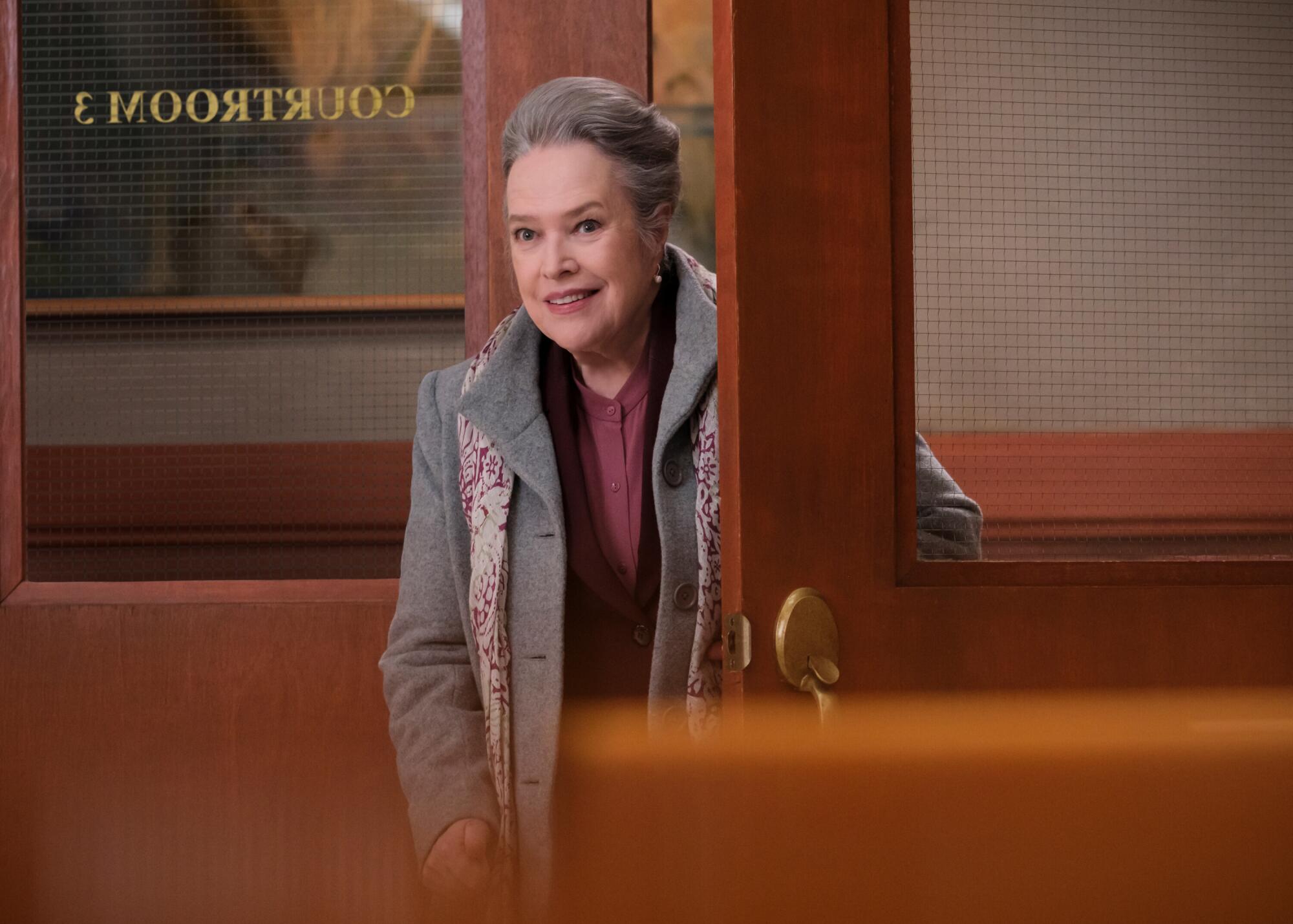
Urman, who turns 50 next year, said she had been thinking a lot about older women and what experience counts for as we age.
“Does it start to mean less as I get older? Because it looks like society thinks that, but actually I feel smarter than I did when I started,” she said. “I just thought, what if I can create a character that constantly tells the audience that she’s underestimated, we see it happening over and over again, and we watch it and we enjoy it, and then by the end, we even underestimated her.”
Eric Olsen, the actor and founder of Cloud Nine, suggested that Matlock is “like Batman — she goes to her lair,” Urman said. “I hadn’t thought about that at all. But that’s interesting, because where is the older woman superhero? She is. She’s doing it. She’s a complicated character.”
Among the shows our TV writers are looking forward to this season are ‘The Golden Bachelorette,’ ‘Matlock,’ ‘St. Denis Medical’ and ‘Landman.’
In a recent video call, Urman talked about letting the viewers know early on that this is and isn’t their grandmother’s “Matlock,” why Bates was the right person to bring new life to the character, and wishing she could use some storytelling devices from “Jane the Virgin” in the legal drama.
Less than five minutes into the show, you let it be known: This isn’t the “Matlock” you think it is.
Yeah, that had to be in the very, very beginning. We had to really explain to the audience what the parameters are of the world that they’re watching. Right away, she is Matlock, but she isn’t Matlock. “Matlock” exists in the world. She knows there’s a TV show, she’s acknowledges it. What we want to do in that moment was put everyone at ease, both in the building and outside of the building. We know what you’re thinking: This is a reboot like you’ve seen before, but it’s not. But we’re not pretending it doesn’t exist. It allowed us to do a bunch of work at once, both character work and show work. I think it’s why I wanted her to say it right away to them — it just puts people at ease. You get that, “Oh, ‘Matlock,’ my grandmother used to like that show.”

Matty is constantly reminding the audience that she’s being underestimated, and she leans into that and uses it to her advantage. What’s your experience with that — being underestimated?
Often when I walk in [a room], I have to, even at this stage, prove to people that I know what I’m doing; not just on the side of writing and character, but that I know what I’m doing on the side of producing, that I know what to do with the money, that I know how we’re going to make the budget work — those things. I feel that there’s still a bit of, “Oh, this is a creative person.” But you’re not only a creative person in this job, you have to be the business person also, and you’re managing this big, huge production. I understand, too, because those are not skills that you have when you start out writing. But there is always a like, “What do you know?” I have to make sure that everybody understands that I understand what’s happening, and that I understand what every job is on this set, and what it entails. I often feel that people don’t expect me to have my hand in everything.
Andy Griffith’s TV legacy: From Mayberry to ‘Matlock’
The series stars the amazing Kathy Bates. Why was she the best person to embody this quasi-revival of the famous fictional character?
The levels that Matty has to be operating on all the time — who, but Kathy, can be doing that? — where you understand she is playing folksy, but she’s got a steel spine underneath, and she is going to make you totally love her. Then suddenly, in a flip, you’re going to realize, “Oh, my God, I didn’t understand her at all.” It’s all of those levels that are packed in. Kathy and I talk a lot about lines in the scenes because we try to make our lines do three things at once: give a little bit of character; give a little bit of you think this, but this is happening; and advance the plot. What I love is that, after the pilot, you’re on the inside with her. You understand, “Oh, this interaction I thought was straightforward, it has so many other layers to it.” And Kathy can do that. So, when we talk, in shorthand, I can be like, “her mask drops” and Kathy gets it.
How did you engage with the original series as you set out in reimagining it?
I watched a lot of “Matlock.” I wanted to absorb the rhythms, I wanted to absorb the feeling, and I wanted to absorb what the expectations would be. I’ve seen it before, but this was a different kind of rewatch, so that I would know, when we’re doing these small moments, if we were referring to the original or not.
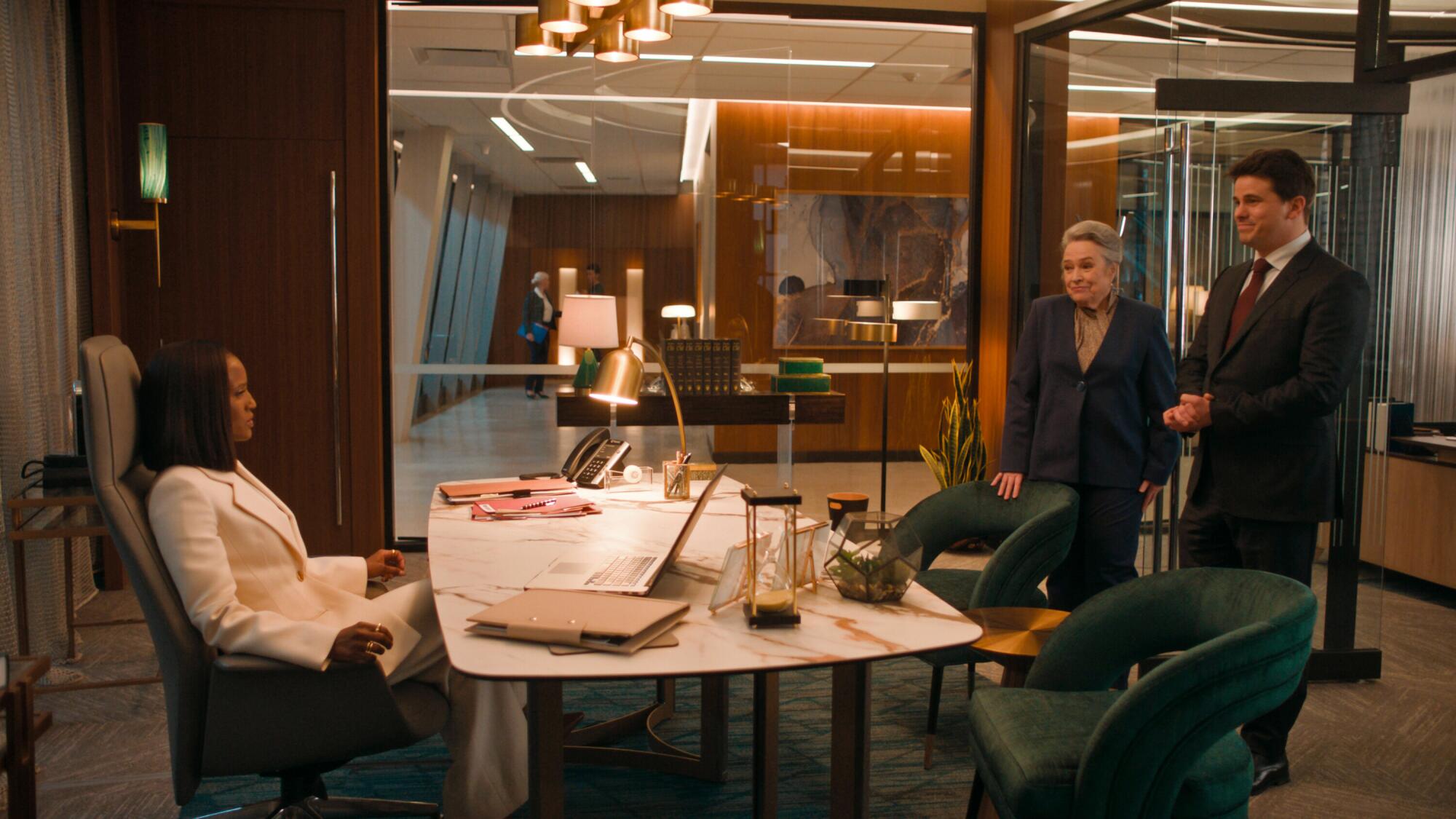
What struck you about the rhythm of the original? There is much to admire about the simplicity and unhurried nature of that storytelling.
It really takes time setting stories in a way that we can’t now. They really went into a lot of worlds and were really specific about it. They have so much more time. You can do just these long table-setting scenes, which we can’t. Every sort of ounce of our real estate has to be used in three different ways at once. Then, also, just coming to that courtroom at the end, where he’s always gonna get the “I gotcha” moment — there’s something really comforting about that, too, knowing that he’s gonna get the bad guy and that the truth is gonna be exposed.
I understand why we watch it. We want to feel the rhythms. We want to feel that things work out the way they’re supposed to. He’s funny. I wanted all those pieces where you can have humor, you can have a character who is beloved, everyone knows them, and they’re always going to give you what you expected. Our Matlock was going to trade on the familiarity of the original, both in terms of tone for the show and for the viewers, and then inside the world too; that she was going to be that folksy, knowable person who you didn’t have to fear because she was going to help you out.
A conversation with ‘Jane the Virgin” showrunner Jennie Snyder Urman ahead of the show’s series finale on the CW.
You’re familiar with keeping viewers on their toes, introducing a nice twist or the slow reveal — and we get that in the pilot. How is writing for “Matlock,” a meat and potatoes procedural, the same or different as writing for “Jane the Virgin,” which leaned on magical surrealism?
We break stories the same way we did on “Jane,” which is through the eyes of the character, making sure that every single scene does a few things at once, that we don’t have just a procedural beat, that it’s a procedural beat that also is going to be a moment in where Matty is suddenly having to expose more about herself than she wanted to. So we were looking at everything as: Where is Matty? What is she thinking? What does she want? And what’s underneath it? That’s the same thing that we would say about Jane constantly.
I remember saying in the writers room, “If we’re going to commit to this, that we flashback at the end, it’s going to be really exciting to commit to it, but it’s also going to be so hard.” It puts an extra pressure on the storytelling, which is that you have to have all your storytelling cards up, and then you have to have a piece that’s cards down. And we usually have that with “Jane” too. But it adds a degree of difficulty here, because it has to be true on the side that you’re watching it and true on the side that you didn’t see. That adds the complexity. We’re breaking a story twice: on the cards up, then again cards down. But there have been many times where I’m like, “What I would give for a fantasy element to dramatize something!” or, “If only a narrator could come in and say, ‘What you didn’t know is that right now she’s thinking this...’ “
Nostalgia is big in Hollywood. You’ve worked on adaptations or reboots before, whether “Jane the Virgin” or “Charmed.” How has your outlook on it evolved?
For me, it’s project by project. If it’s interesting enough, and if it feels like there’s a need, then I’m interested in it. And if there’s a chance to do something different than what was originally done. That’s my philosophy. You’re always surprised by where the creative spark comes from. I was surprised during that walk that suddenly this was the show that I was going to be 100% writing. I’ve written things in between “Jane” and “Matlock” that didn’t get made. It’s a hard business, and it’s hard no matter where you are, and it’s hard no matter what you’re doing. I have the original piece that I am, like, “Now, are you ready? Now, are you ready?” But it didn’t get made. And it’s not that I would write something just to get it made, because this job is too hard. It’s too hard to do it if you don’t have the real creative spark, inspiration and passion.
More to Read
The complete guide to home viewing
Get Screen Gab for everything about the TV shows and streaming movies everyone’s talking about.
You may occasionally receive promotional content from the Los Angeles Times.

